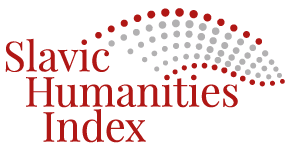The Conflict in Nagorno-Karabakh and its Influence on Society (according to Akram Aylisli's "Stone Dreams", Gunel Movlud's "The Camp" and Narine Abgaryan's novels)
DOI:
https://doi.org/10.61671/hos.7.2024.8297Keywords:
traumatic memory, the post-war world of Nagorno- Karabakh and its influence on societyAbstract
The Nagorno-Karabakh conflict is an ethnic and territorial dispute between Armenia and Azerbaijan which is going on in the Nagorno-Karabakh region and its surrounding territories. This conflict started from the beginning of the 20th century, but it was especially aggravated in the late of 1980s, when at the background of the collapse of the Soviet Union, Armenians demanded the independence of Nagorno-Karabakh and its separation from Azerbaijan.
The "Khojal Massacre"[1] that occurred in February, 1992 caused mass casualties among the civilian population and large-scale forced migration. This tragic event became one of the most severe episodes of the conflict, which led to the demographic changes in the region and still remains a source of tension between the two countries up to these days. The intractability of the conflict continues to have an influence on regional stability and international relationship in the South Caucasus. The Karabakh conflict, along with forced migration, has a result in economic hardship and psychological trauma for many people. The Nagorno-Karabakh conflict had a significant influence on the societies of both countries, Armenia and Azerbaijan, which was written in Akram Aylisli's "Stone Dreams", Gunel Movlud's "The Camp" and Narine Abgaryan's fiction novels, where the consequences and influence of this conflict are thoughtfully discussed.
Akram Aylisli's "Stone Dreams"[2], Gunel Movlud's "The Camp" and Narine Abgaryan's "To Live On" are works where the writers were able to stand above the worst human evils, defeat the enmity and cruelty in themselves, prolong and capture the pain and suffering of the opposite side.
Akram Aylisli, Narine Abgaryan and Gunel Movlud - are writers who are talking about the Karabakh war and the post-war period, about the fate of people who have been withdrawn from their land, home, and habitual existence, who have lost all their possessions.
Writers write about what they have seen and experienced with their own eyes. All three authors are trying with all their heart to share the pain and trauma that changed a person's entire life. All three authors are talking about the economic hardships and psychological trauma experienced[3] by forced migrated people and often mention the topics of conflict and war. (Alexander, 2004:5). [4]
The authors are presenting both sides of the conflict, their cultural heritage and issues of national identity, are talking about the absurdity and devastating consequences of war. Their characters are the representatives of people trying to maintain their dignity and continue living in the harsh conditions of war and conflict.
These literary novels offer us a unique opportunity to understand the complex nature of conflict and its influence on people's lives and society, thus helps to deepen empathy and mutual understanding.
The novels of all three authors are a kind of mirror that reflects a catastrophic truth: war and the resulting trauma are an invariable tragic component in human history, even in the modern world.
[1] "Khojal genocide, which is directed against the whole Azerbaijani people, is the manifestation of barbaric action in the history of mankind; It is characterized by incredible cruelty and inhuman methods of punishment. This genocide is also a historical crime against all humanity."
[2] https://www.armin.am/images/menus/1400/AkramAilisli-Stone-dreams.pdf
[3] Айерман Р. Социальная теория и травма / Р. Айерман // Социологическое обозрение. — Т. 12. — 2013. — № 1. — С. 125.
[4] Казарян К., Исаев Г. Армяне и азербайджанцы залечивают психологические раны после войны.



































